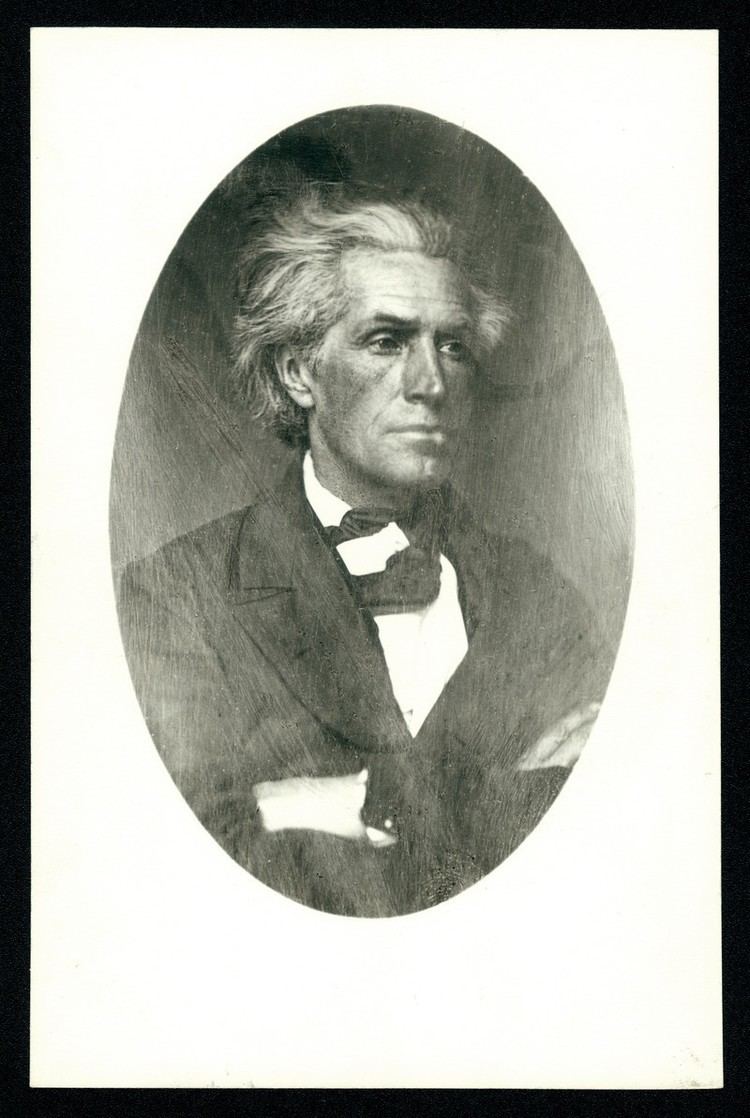Died 1868 | ||
 | ||
Joseph Nash McDowell (1805-1868) was one of the most influential and respected doctors west of the Mississippi in the 1840s until his death in 1868. He is primarily remembered for his grave-digging practices, where he illegally exhumed corpses in order to study human anatomy. He is also known for his influence on Mark Twain, and was likely the inspiration for Twain’s fictional character Dr. Robinson in “The Adventures of Tom Sawyer.”
Contents
Early career
Dr. McDowell moved to St. Louis in 1839 with a reputation that preceded him. He had previously worked in Kentucky, Philadelphia, and Ohio, at various medical facilities, and studied at Transylvania University in Kentucky. In 1840, he founded Missouri’s first medical school, Missouri Medical College. It was the first medical school founded west of the Mississippi River and helped create the Washington University School of Medicine, after McDowell’s death, in 1891.
Collecting Corpses
In the 1840s, using cadavers to study human anatomy was a highly uncommon, and frowned upon, practice in the United States. Prior to the Civil War, only 5 states allowed the dissection of non-felons for medical and educational purposes. Three of these laws were soon repealed, leaving the practice legal in only New York and Massachusetts. Dissecting cadavers was crucial to gain a comprehensive understanding of human anatomy and to enhance and develop more accurate medical practices; however, the public was wary of the idea, believing it to be a desecration of the dead. In large part, this feeling was due to religious reasons; Christianity, for example, calls for burial of the dead. Exhuming the dead was not only disrespectful but could also be considered sacrilegious.
Dr. McDowell believed the practice to be necessary in order to advance medicine and his own personal understanding of the human body. During his time teaching at the medical school, he not only encouraged but also required that his students perform at least one human dissection before their graduation. This illegal practice served as a form of bonding for the students, as the public looked on these grave-robberies with scorn and they were left with only each other to discuss what they had done and how it impacted their education.
Rumors and Folklore
Perhaps the most memorable incident surrounding the rumors that McDowell was robbing graves came after the disappearance of the wife of a German immigrant, Mrs. Walters, in 1849. She was last seen walking within a few blocks of the Medical College, and one witness claimed to have seen an article of her clothing near the school. Days later, 200-400 people, led mostly by the German-immigrant population in St. Louis, stormed to the school. The crowd demanded permission to search the premises for evidence of Mrs. Walter’s murder. McDowell eventually agreed to Mr. Walters searching the school on the condition that the crowd disperse. No evidence of Mrs. Walters or her alleged murder was found, and two months later, she was discovered living in a nearby city with another man.
This was not the only instance that McDowell clashed with the public. While never caught red-handed, it was common knowledge that he and his medical students were exhuming the recently dead in order to dissect the bodies. Countless rumors began to spread, and he later became known as “Mad Doctor McDowell.”
Another infamous rumor began after the death of McDowell’s daughter, Amanda. Despite his insistence on the importance of science in medicine, McDowell held strong spiritual beliefs regarding the dead. He believed that communication between the living and dead was possible, and even reported seeing a vision of his dead mother on one occasion. He preserved his daughter’s body in a container filled with alcohol and hung the container suspended over the ceiling of a cave in Hannibal, Missouri. He believed that this burial would somehow allow communication between himself and his daughter; however the local people of Hannibal soon discovered the bizarre manner in which she was laid to rest, and created rumors that Amanda was haunting the cave.
Civil War
During the onset of the Civil War, McDowell was recruited as the Surgeon General of the Confederate Army of the West. His medical school was taken over by the Union and temporarily became the Gratiot Street Prison. During this time, there were numerous reports of bones being removed from the building, and whispers that it was haunted spread through the public. McDowell returned to St. Louis in 1865 to find the school in ruins. Together with a colleague, he began to rebuild the Medical College. He died three years later, and is buried in the Bellefontaine Cemetery, together with his other family members, in St. Louis.
